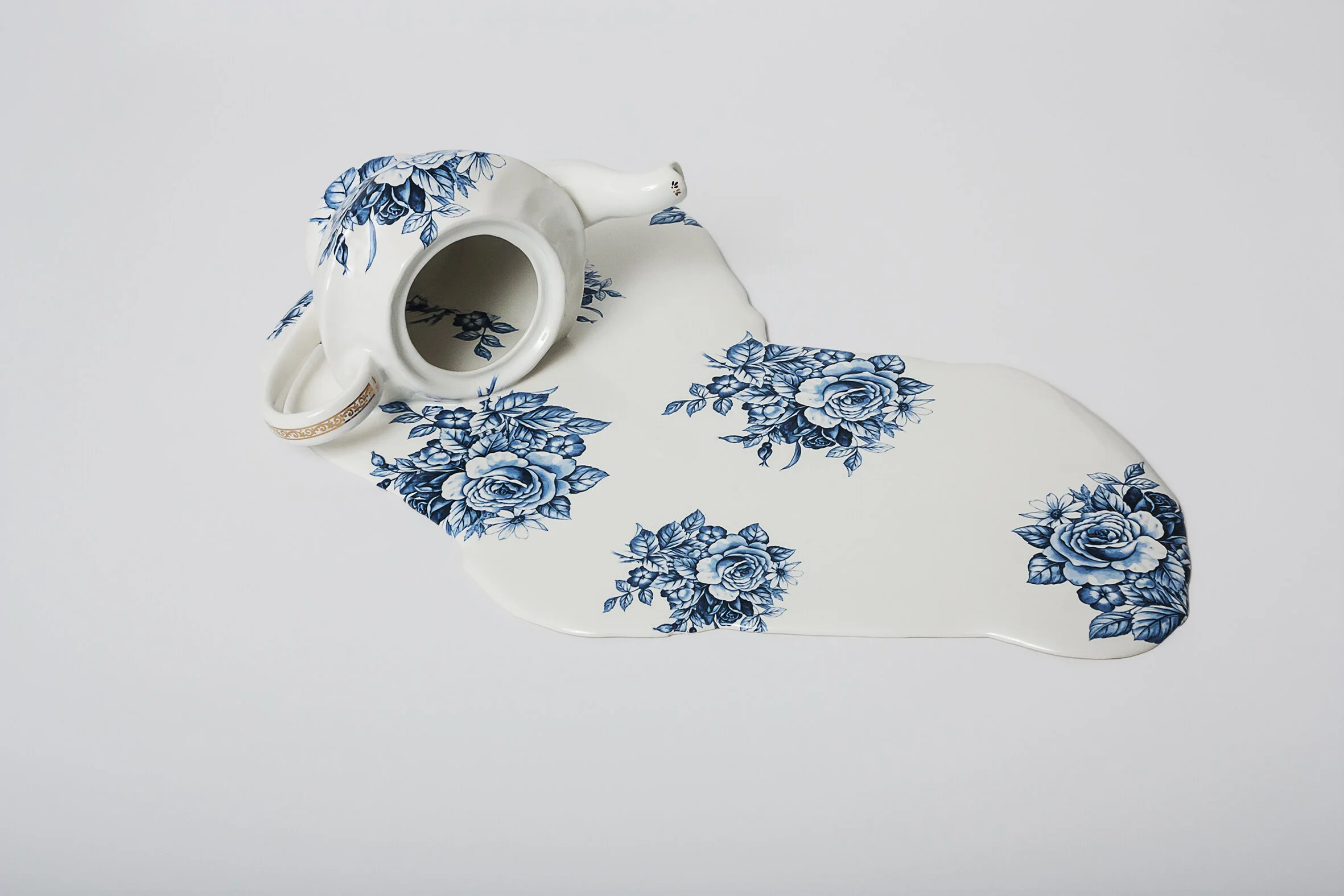LIQUID ART
Artist LIVIA MARIN reveals a message behind the curious state of her familiar objects, which she has given a second life outside of the frames of their function.
Interview by Contributing Editor Olya Titiova.
LB: Your NOMAD art series distorts a visual idea of an everyday object, transforms our vision of them as a commodity. Did you always have them as a basis for your installations?
LM: Yes, everyday objects have been a common thread within my practice. In my work, I have employed various objects of daily use: lipsticks, cups, planters, paintbrushes, cuddly toys, books, kitchenware, one-pound shop items, and many more. Being very interested in ´material culture,’ I center my attention on the relationship that we establish with common objects. The series Nomad Patterns and Broken Things look into how we relate to objects when they break: how aspects of loss and care enter into that relation.
LB: With the growth of the new sustainability trend, your art perhaps has acquired a new meaning. How do you relate to this new direction?
LM: My work has steadily moved in tandem with the sustainability wave. Even though I have always employed both new and second-hand objects, within recent years, I have centered much more on the latter. The Broken and Nomad series look precisely at that moment when objects cease to fulfill their given function, and they become susceptible to be regarded as rubbish or to be invested with some new proprieties or connotations and be transformed in something else. In 2018 I made a work using avocado shells and stones that I entitled green gold: from a different perspective that work touches on important aspects of sustainability and value (or the lack of it) that gets attached to objects after they have been consumed.
LB: Why did you choose this particular design for the Nomad series? Is there any connection to your heritage?
LM: There is no specific relation between the decorative patterns I use and my heritage. The work aims to engage with issues of cultural exchange and how trade has a relevant role in the pollination between cultures. While in Broken Things, I employ commercially available floral and miscellaneous transfer-printed motifs, the series Nomad Patterns takes as its central figure the well-known ‘Willow Pattern’ – very important within the Blue & White ceramic tradition and the trade between East and West. The work makes reference to the outset of the Chinoiserie style, the transition from the hand-painted to the use of transfer prints, and the beginning of mass production during the Industrial Revolution.
LB: What are you working on now, and what are your plans for the near future?
LM: At the moment, I am working on a new project that will look like a very large and diverse collection of objects – like a cabinet of curiosities. The work will be a large installation. It will involve a publication, and I hope to exhibit it in various venues and countries.




